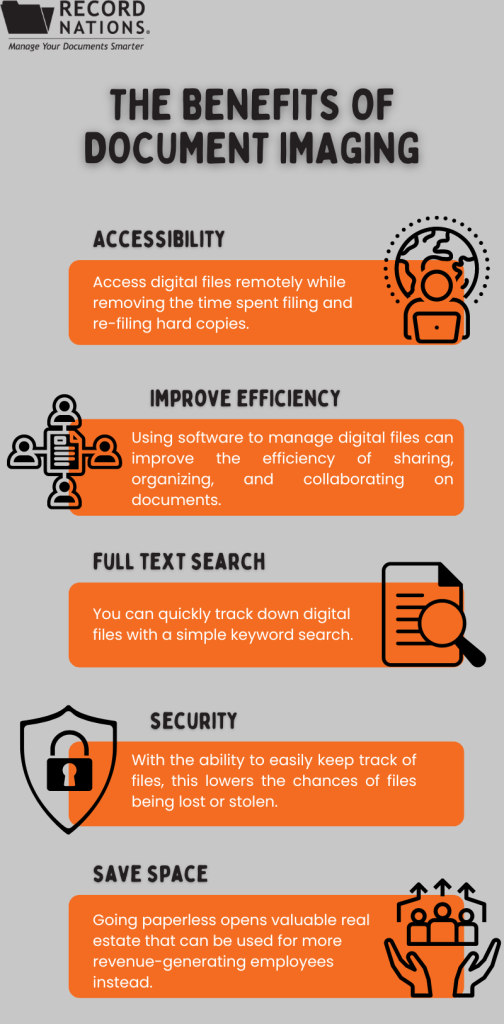
Document imaging is essential for businesses, both large and small, to streamline business processes. It makes up a big part of the movement toward a paperless office.
makes up a big part of the movement toward a paperless office.
Whether you call it electronic imaging, document imaging, or even document scanning, it is the technology that enables users to scan hard-copy documents into a computer system and store them in digital format.
We took an in-depth look at what document imaging means, the benefits, how to manage the digital copies, and the cost below so you can start your transformation to a paperless office today.
What is Meant By Document Imaging?
- Document imaging—The process of capturing, storing, and retrieving documents regardless of the original format, using micrographics and/or electronic imaging (scanning, OCR, ICR, etc.). It takes physical papers and converts them into a digital file, eliminating the need for a paper copy.
Benefits of Document Imaging
There are several reasons why you would want to digitize your organization’s documents:
- Accessibility
- Improve Efficiency
- Full-text search
- Security
- Save Space
The Basic Components of Managing Documents with Imaging
There are five basic components to imaging and document management systems:
- Input – Your documents are scanned into the system.
- Identification or indexing – This creates organization for your filing system for easy retrieval. Some common ways to index digital files are customer name, account number, document date, type of file, and department.
- Storage – Long-term and reliable storage accommodates changing documents and advancing technology.
- Retrieval – A good retrieval system will make finding files quick and easy.
- Retention/Destruction – With documents at the end of their retention period, the system will quickly find and destroy them.
How Much Does Document Imaging Scanning Cost?
Document imaging on average costs 7–12 cents per page. While imaging is getting easier to manage with all of the various types of scanning software available, the main things to consider before starting an imaging project are:
- Sorting the documents – deciding what needs scanning and what doesn’t
- Preparing them for scanning – removing all the staples and bindings
- Indexing – organizing them so they can be easily searched and retrieved
- Storing documents in a system – managing a system in-house or a cloud service
Start Your Transition To A Paperless Office Today
If you think imaging could benefit your business, we can help you locate a professional scanning service for you. To learn more about the imaging services that we can provide, fill out the form, use the live chat, or give us a call at (866) 385-3706.
Our network of scanning service professionals has extensive experience in helping businesses of all sizes migrate to a paperless office or digital filing system. We use proven methods combined with the latest scanning software and equipment to help create a very useful document management system that will change the way you do business.













